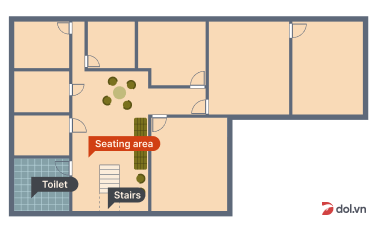Cambridge IELTS 11 - Listening Test 4 With Practice Test, Answers And Explanation
Luyện tập đề IELTS Online Test Cambridge IELTS 11 - Listening Test 4 được lấy từ cuốn sách Cambridge IELTS 11 với trải nghiệm thi IELTS trên máy và giải thích đáp án chi tiết bằng Linearthinking, kèm answer key và list từ vựng IELTS cần học trong bài đọc.
Section
👂️ Bài nghe section 1
❓ Tapescript section 1
🔥 Đáp án & giải thích section 1
Giải thích chi tiết
 Do school là một danh từ nên mình sẽ cần điền một tính từ
Do school là một danh từ nên mình sẽ cần điền một tính từ
=> Mình biết đáp án sẽ tới sau "And the venue is the school, isn't it?''
 Sau đó, Rob trả lời là ''Yes, that's right, the secondary school''
Sau đó, Rob trả lời là ''Yes, that's right, the secondary school''
=> Đáp án là secondary 
 Rob có nhắc thêm là ''Make sure you don't go to the primary school by mistake''
Rob có nhắc thêm là ''Make sure you don't go to the primary school by mistake''
Section
👂️ Bài nghe section 2

❓ Tapescript section 2
🔥 Đáp án & giải thích section 2
Giải thích chi tiết
 Đối tượng của câu là 20th-and-21st-century paintings
Đối tượng của câu là 20th-and-21st-century paintings
=> Mình biết đáp án sắp tới sau 'we have a fine collection of twentieth and twenty-first century paintings …''
 Sau đó, người nói nhắc là ''This is the gallery that attracts the largest number of visitors''
Sau đó, người nói nhắc là ''This is the gallery that attracts the largest number of visitors''
=> Đây là gallery thu hút nhiều khác nhất, có nghĩa là nó nổi tiếng nhất
=> Chọn đáp án E 
Section
👂️ Bài nghe section 3
❓ Tapescript section 3
🔥 Đáp án & giải thích section 3
Giải thích chi tiết
 Mình đang cần tìm hai đặc điểm của đối tượng nghiên cứu của Joana
Mình đang cần tìm hai đặc điểm của đối tượng nghiên cứu của Joana
=> Mình biết phần này tới sau ''So how did you choose your subjects for that?'' (Vậy bạn chọn đối tượng như thế nào?)
 Đầu tiên, ''Well, I had six subjects, all professional musicians, and all female.''
Đầu tiên, ''Well, I had six subjects, all professional musicians, and all female.''
=> Không trùng với đáp án nào nên mình nghe tiếp
Section
👂️ Bài nghe section 4
Claims that 13% of CO2 in the atmosphere could be absorbed by agricultural soils
Erosion is more likely in soil that is
31
Lai found soil in Africa that was very
32
It was suggested that carbon from soil was entering the atmosphere
Plants turn CO2 from the air into carbon based substance such as
33
Some CO2 moves from the
of plants to microbes in soil34
Carbon was lost from the soil when agriculture was invented
uses established practices to make sure soil remains fertile and
35
e.g. through year-round planting and increasing the
of plants that are grown36
taking place on a big
farm37
uses compost made from waste from agriculture and
38
aims to increase soil carbon by using
that are always green39
reducing the amount of fertilizer used in farming
giving farmers
for carbon storage, as well as their produce40
❓ Tapescript section 4
🔥 Đáp án & giải thích section 4
Giải thích chi tiết
 Mình xác định đáp án là một tính từ chỉ tính chất của đất
Mình xác định đáp án là một tính từ chỉ tính chất của đất
 Sau khi giải thích về carbon-rich soil, người nói có cung cấp thông tin là ''But erosion can occur if soil is dry, which is a likely effect if it contains inadequate amounts of carbon.''
Sau khi giải thích về carbon-rich soil, người nói có cung cấp thông tin là ''But erosion can occur if soil is dry, which is a likely effect if it contains inadequate amounts of carbon.''
=> Đất khô sẽ có khả năng bị xói mòn hơn
=> Đáp án là dry  (Câu này không có cue để cho mình biết đáp án sắp tới nên bạn phải sẵn sàng ngay khi nghe được từ erosion)
(Câu này không có cue để cho mình biết đáp án sắp tới nên bạn phải sẵn sàng ngay khi nghe được từ erosion)


